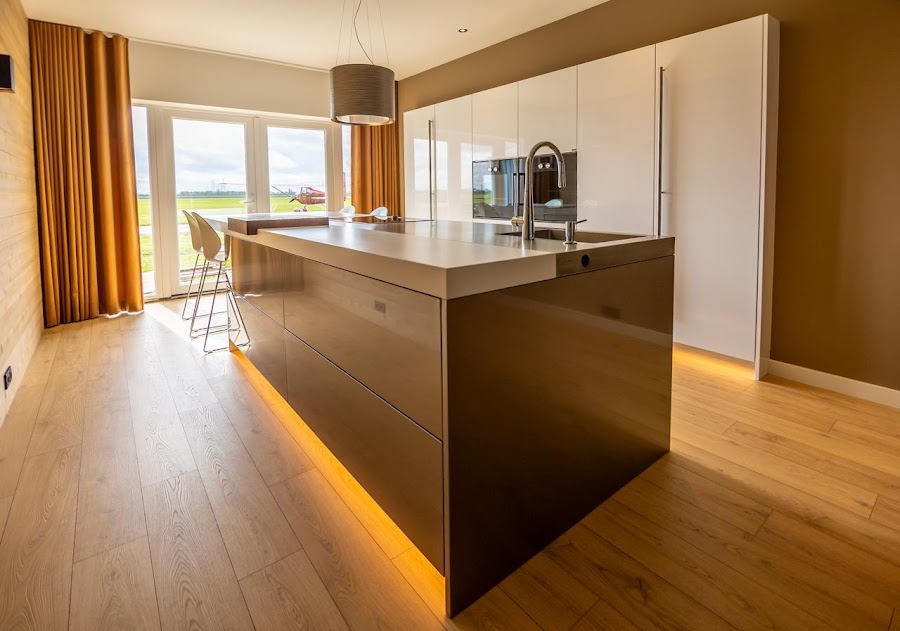As I`m selling more and more kitchens abroad I`ll try to post an English written post sometimes too. This time the second part about the history of the brand Snaidero (click here for the first part) and click here for the third part.
Snaidero is a very old brand already, so this time a post about the history of Snaidero in the sixties.
THE 1960`s: THE BOOM
ITALY DISCOVERS THE MODULAR KITCHEN, SNAIDERO FLIES TO THE MOMA IN NEW YORK
At the very beginning of the 1960s, as we have seen, the Company became exclusively specialised in the design and manufacture of kitchens. And not just any kitchens, modern modular kitchens. 1961 therefore saw the launch of “Gloria”, the first modular kitchen in polyester lacquered wood made by Snaidero. The domestic appliances were built into the kitchen - a conceptual revolution! What were once simple storage units now became wonderfully equipped cabinets arranged around the contours of the room. The revolutionary product was completed by a version with a filtration hood.
Innovation often leads to further innovation. Rino soon realised that “Gloria” was a kitchen product with a potential market much bigger than the one the Company had managed up until then. Its creation and innovative content was therefore advertised using the new possibilities offered by the newly created mass media. This was already widespread, if not yet in peoples' homes, in public places all over Italy: Television. It was a 15 second television advert that then first brought the national public's attention to both the innovative kitchen called “Gloria”, and the dynamic brand named “Snaidero”.
The market's response also rewarded the innovation offered by this product and this soon transformed itself into a flattering portfolio of commissions. In the national and international context of the times - when films and music infected Europe from across the ocean, exporting what later went down in history as the “American Way of Life” - everything was moving euphorically towards the new and towards full economic development.
We said that the figure of the pioneer and entrepreneur is characterised by courage and foresight. Let's add intuition to this list of virtues. Rino Snaidero recognised the importance of the cultural changes taking place and anticipated their imminent consequences in terms of market trends. If America doesn't have the historical weight of the Old Continent, the History of America needs to be invented, thought Rino. So he dressed his furniture, which was already rational and modern, with the colours and suggestions of those endless grasslands and named it “Old America”.
The cabinets in the “Old America” range used practical compositions and modern built-in appliances, balancing this, however, with the search for warm and welcoming atmospheres. It was thus able to create the type of habitat that was most sought after, at that time, by a large section of the marketplace that was still distant from the tastes of avant-garde pure rationalism. The result was a hugely successful product, with no real competition or possible comparisons, which made use of the most innovative materials of the time, such as plastic laminates and composites.
However, as we have seen, even as early as the end of the 1950s Rino Snaidero was already convinced that times had changed and that the kitchen manufacturing industry would sooner or later have to encounter the world of the designers. In other words to make use of the theoretical and practical contributions offered by those brilliant professionals that were able to translate the now quite evolved needs of the consumer into splendid products. New well-being and new lifestyles, in part arising from influences arriving from across the ocean, gave rise to a new taste, even in home furnishing. The public was then gripped by an almost cultural and practical necessity to fully express its contemporary nature.
And so it was that in 1968 the great architect and designer Virgilio Forchiassin designed the “Spazio Vivo” kitchen for Snaidero. It was an extraordinary and innovative product, able to interpret its customers' new demands and to set out new lifestyle scenarios. The hob and sink were designed according to a revolutionary new concept: they were grouped into an island – for the first time ever! – and given the name “central block”. The remaining functions are assigned to the wall space using innovative moving blocks which, hinged to the base units, open and close according to the function they are designed to perform. This is when the unthinkable happened. On its debut, the Snaidero “Spazio Vivo” kitchen immediately entered the permanent collection of the prestigious “MoMa” (Museum of Modern Art) in New York, an international temple to avant-garde design.
Every well-made cake needs a bright red cherry to finish it off however, and this is also true of other more complex situations. And so it was that after a period of dazzling and exciting growth, Rino Snaidero had the satisfaction of seeing his Company listed on the Stock Exchange. What was once a small craft workshop with big dreams for the future, became “Snaidero Rino S.p.a.” in 1969.
Finally. Besides English written blogposts I`m making English spoken video`s nowadays too (excuse me that my English is not perfect but I`m working on it). Above is a video embedded of the Ola 20 kitchen in my showroom.

Geen opmerkingen:
Een reactie posten